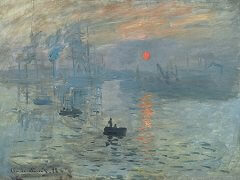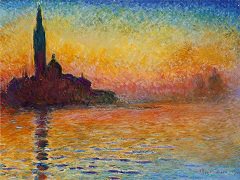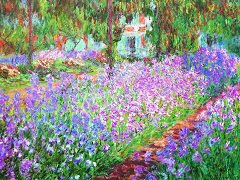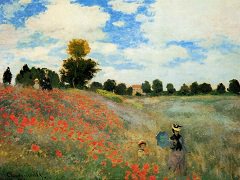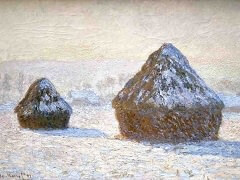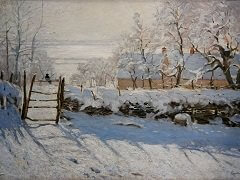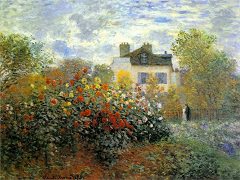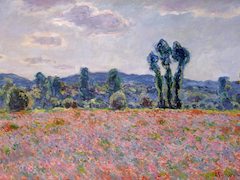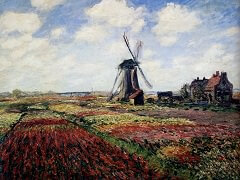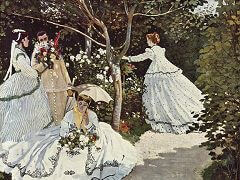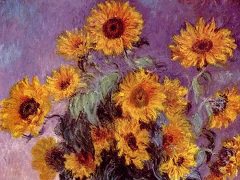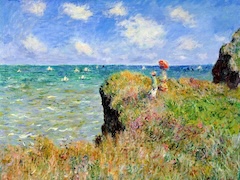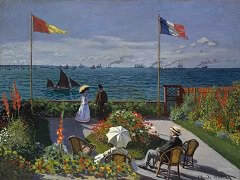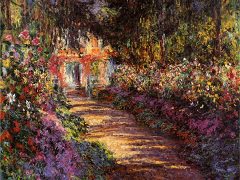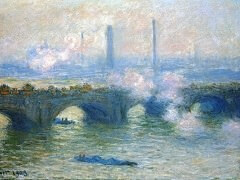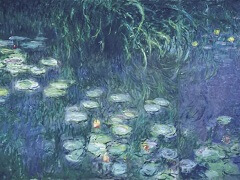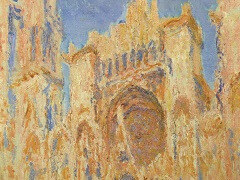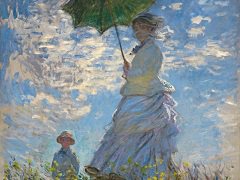Claude Monet and Pierre-Auguste Renoir
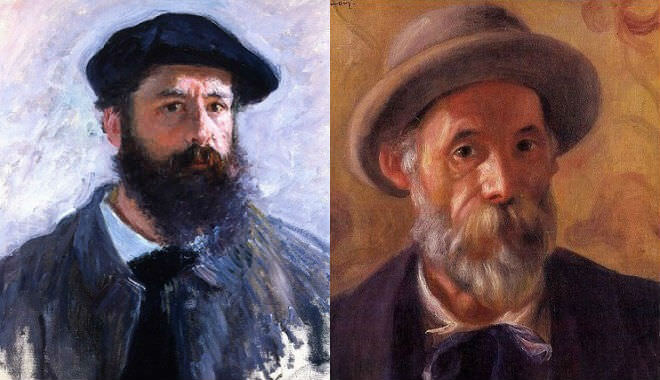
La Grenouillere by Pierre-Auguste Renoir, is a perfect example of French Impressionism. Interestingly enough, it is also a perfect painting with which to compare Renoir's style with that of his close friend, Claude Monet, who founded the school. La Grenouillere was a resort located on the Seine featuring boating and other activities. Both Renoir and his friend Monet painted nearly identical scenes at La Grenouillere, featuring various people enjoying a small floating dock in the painting's center, as well as various boats. La Grenouillere serves as a perfect example to compare and contrast the two masters' styles.
La Grenouillere, which means "frog pond," in French, was a popular resort for young working class Parisians to relax. Located on the Seine River, La Grenouillere was accessible by train from Paris and had even been a vacation spot of the emperor Napoleon and his family. Also a popular spot with artists, Monet actually lived by La Grenouillere and it was upon a visit by Renoir that the two painted the scene.
Monet wanted to represent a single moment of light and evoke feelings and emotions about the power of Nature. His deliberate division of subjects also leads the eye naturally from one plane to another - he began with detailed concentration on the flowers in the meadow which lead us into the water of the pond, then to the trees and shrubs in the background, and then into the sky above.
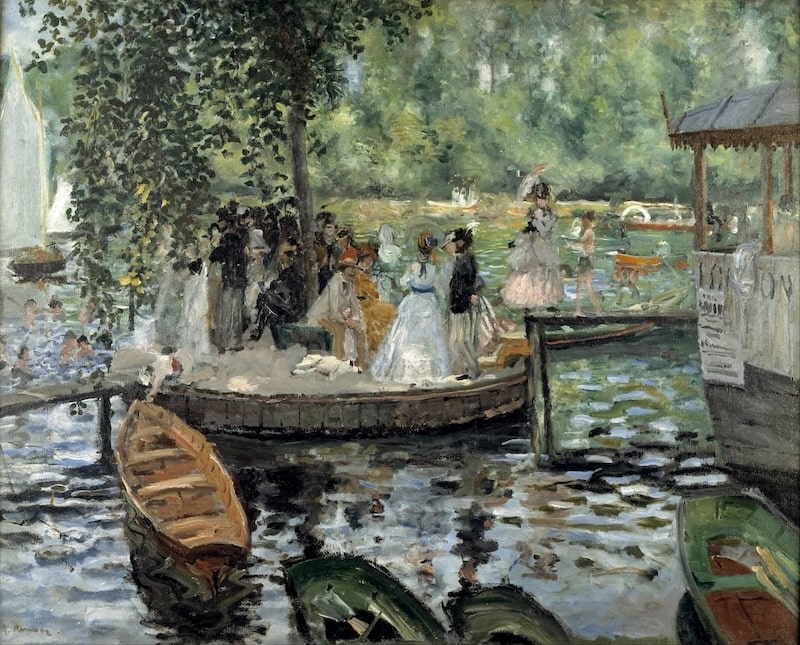
La Grenouillere is exceptional in that it offers a direct comparison in the techniques between two of the greatest painters in the history of art, and certainly the two greatest Impressionists. Painting from almost the same spot, Renoir and Monet painted with almost identical perspective, allowing a direct comparison between the two painters. In each painting the view is of a small, round floating dock. Each painting features a large boat floating towards the dock and a number of small rowboats. Both painters use the impressionist style of bold strokes and aversion to blending colors to depict the light ripples on the water. A few key features like a large boat entering the scene from the right and a drooping tree limb in the foreground also seem to confirm the paintings were done at the same time.
Monet's version was criticized as being "unfinished" but at the time he was experimenting with an unfinished "painterly" style. It is sometimes speculated that his version was actually a sketch for a lost, larger painting. In truth, though, that was likely only a reaction to the impressionistic style of the piece, which was still revolutionary at the time.
Renoir chose to paint a closer view of the scene, with the result that there is much more of a focus on the people, along with a few dogs that are absent from Monet's painting. The overall effect is
that Renoir's seems more bustling and active. Renoir also paints details in the scene, such as a docked rowboat, and leafy branches hanging from a tree, with sharper, more defined lines.

A remarkably prolific artist, Renoir's works numbered in the thousands by the time of his death. In such a long history, and with a passion for experimentation, there will of course be a remarkable diversity of styles and subjects. However, Renoir is best known for figure paintings and most of his later works focus on a person or groups of people. It was in his early years and during his friendship with Monet that Renoir primarily did his landscape paintings. La Grenouillere stands out as one of his masterpieces that manages to mix together both the landscape and the personal in one painting.
Pierre-Auguste Renoir was an extraordinarily productive painter who worked during one of the most exciting points in art history. Along with fellow painters, including Claude-Monet, he rebelled against classical techniques to create the Impressionist movement. While Renoir was a peer of Monet and is one of the impressionist greats, he did find a greater affinity for classical techniques, which shows in the somewhat more defined lines of his La Grenouillere. Renoir's La Grenouillere can be seen at the National Museum in Stockholm, Sweden.

